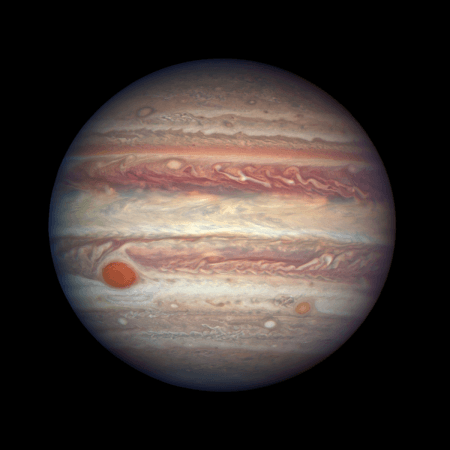The mechanism behind Jupiter's atmospheric heating was discovered by space scientists who could prepare the most precise global map of Jupiter's upper atmosphere ever, using data from the Keck Observatory in Hawaii, showing for the first time that the gas giant's massive aurorae are responsible for delivering planet-wide warmth.
The joint study at the University of Leicester, in collaboration with colleagues from the Japanese Space Agency (JAXA), Boston University, NASA's Goddard Space Flight Center, and the National Institute of Information and Communications Technology (NICT) created extremely detailed temperature maps using the Keck telescope.
"We discovered that temperatures within the aurora start quite high, as predicted by earlier research, but that Jupiter's aurora, despite covering less than 10% of the planet's surface area, appears to be heating the entire planet," stated Dr James O'Donoghue, a JAXA researcher who earned his PhD at Leicester and the paper's lead author.
At the University of Leicester, the scientists initially tried to make a global heat map of Jupiter's upper atmosphere. Although the signal was not bright enough to disclose anything beyond Jupiter's polar regions at the time, they were able to secure time on one of the world's largest and most competitive telescopes a few years later.

This research began in Leicester and continued at Boston University and NASA before concluding at the Japan Aerospace Exploration Agency (JAXA). This study was made possible through collaboration between researchers from each continent, as well as data from NASA's Juno spacecraft in orbit around Jupiter and JAXA's Hisaki satellite, a space observatory.
"In the thin atmosphere at the top of every Giant Planet in our solar system, there has been a long-standing puzzle. We have consistently measured the equatorial temperatures as being substantially too hot with every Jupiter space mission, as well as ground-based observations, for the past 50 years. In this study, we describe how we mapped this region in unprecedented detail and shown that equatorial heating is intimately related to auroral heating at Jupiter," said Dr. Stallard.
When charged particles are captured in a planet's magnetic field, aurorae form. These spiral down the field lines in the direction of the planet's magnetic poles, impacting atoms and molecules in the atmosphere to release light and energy.
Previously, temperature maps of the high atmosphere were created using photographs with only a few pixels. This resolution is insufficient to see how global temperatures are changing, and it provides few hints as to the source of the extra heat.
Finest resolution map
The greatest resolution map shows an average temperature measurement for squares two degrees longitude 'high' by two degrees latitude 'wide,' while the lowest resolution map shows an average temperature measurement for squares two degrees longitude 'high' by two degrees latitude 'wide.'

The researchers combed through more than 10,000 data points, only mapping those with an uncertainty of less than 5%. Models of gas giant atmospheres suggest that they function as a gigantic refrigerator, with heat energy being pulled from the equator and deposited in the lower atmosphere in these pole regions.
These new findings show that rapidly changing aurorae may generate energy waves that counteract the poleward flow, allowing heat to reach the equator.
Observations also revealed a zone of localised heating in the sub-auroral region, which may be read as a limited wave of heat travelling equatorward, indicating that the process driving heat transfer is active.
The University of Leicester's planetary study includes the entire Jovian system, from the planet's magnetosphere and atmosphere to its unique array of satellites, revealed the paper published in Nature.














